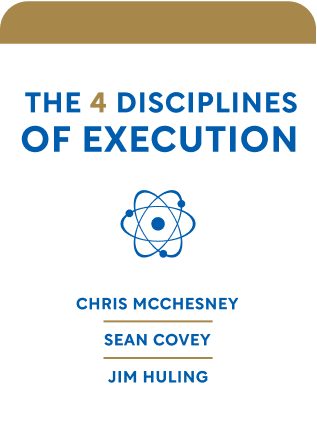

This article is an excerpt from the Shortform book guide to "The 4 Disciplines of Execution" by Chris McChesney, Sean Covey, and Jim Huling. Shortform has the world's best summaries and analyses of books you should be reading.
Like this article? Sign up for a free trial here .
What does it mean to “focus on the wildly important” in 4DX? How does this focus set you up for successfully executing on your goals?
“Focus on the wildly important” is the core of the first discipline in The 4 Disciplines of Execution. You set wildly important goals, and you have to remain focused on them.
Keep reading to learn how to focus on the wildly important goals.
Discipline 1: Focus on the Wildly Important
The key of this discipline is to focus on the wildly important and only that. Genetically, human beings work best when they do one thing at a time. Multitasking overloads our brains, and when our brains are overtaxed, they slow down. As you practice multitasking, you actually get worse at thinking and problem-solving. As a result, it’s physically impossible to be most effective when concentrating on too much at once.
You can see the harmful effects of multitasking in the workplace too. When you have too many goals, you get hit with the law of diminishing returns. If you have four to ten goals, you might achieve one or two. If you have more than ten, you won’t achieve any of them. Too many or unfocused goals also make the whirlwind worse. What might be five goals at the top of an organization cascades down to many smaller goals at the bottom of the hierarchy, creating too much to focus on. Also, conventional organizational goals often lack measurability, focus, and a deadline.
Therefore, when you want to create change, choose one, at max three, very important goals to work toward. Call them Wildly Important Goals (WIGs) to make it easy for you and staff to remember that they’re top priority. These goals should not come from the whirlwind, and this discipline doesn’t apply to the whirlwind. (The whirlwind is made up of the essential day-to-day activities that keep your organization running. If you ignored parts of it, your organization wouldn’t survive.)
Additionally, this discipline helps you more clearly communicate your strategy to your organization. Choosing a WIG forces you to translate strategy from ideas to a specific outcome. When there are only a few specific outcomes, it’s easy for your staff to differentiate what’s goal and what’s whirlwind.

———End of Preview———
Like what you just read? Read the rest of the world's best book summary and analysis of Chris McChesney, Sean Covey, and Jim Huling's "The 4 Disciplines of Execution" at Shortform .
Here's what you'll find in our full The 4 Disciplines of Execution summary :
- The 4 disciplines that can make any strategy a successful reality
- Why a great plan falls apart when you don't think adequately about execution
- The 6 steps you need to scale the 4DX model across an entire organization






